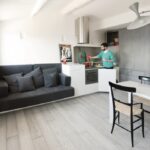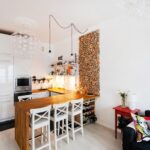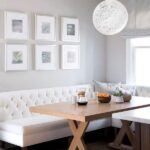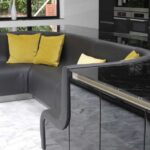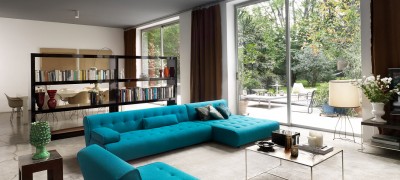How to make a sofa in the kitchen with your own hands
A sofa in the kitchen can function not only as a comfortable seat, but also as a decorative one - made with your own hand, it will add a zest to the interior. Making a sofa for the kitchen with your own hands is not so difficult; this will require a little skill, patience and practical advice from our article.

What is a sofa in the kitchen for?
Despite the fact that the sofa in the kitchen takes up a lot of space, it will certainly meet any expectations. This is not only a place for comfortable accommodation of guests and households. Such a detail of the interior will add coziness and comfort, allow you to embody creative ideas and turn an ordinary kitchen into a living room or dining room. In addition, a do-it-yourself corner sofa in the kitchen can be used for quite practical purposes.

The advantages of structures in the interior are as follows:
- It can be used as a main seat or an addition to chairs.
- Used as a sleeping place. It is advisable to install a small sofa with a folding structure, but pull-out cabinets will have to be sacrificed.
- You can divide the dining and working areas, but this is only suitable for a spacious kitchen.
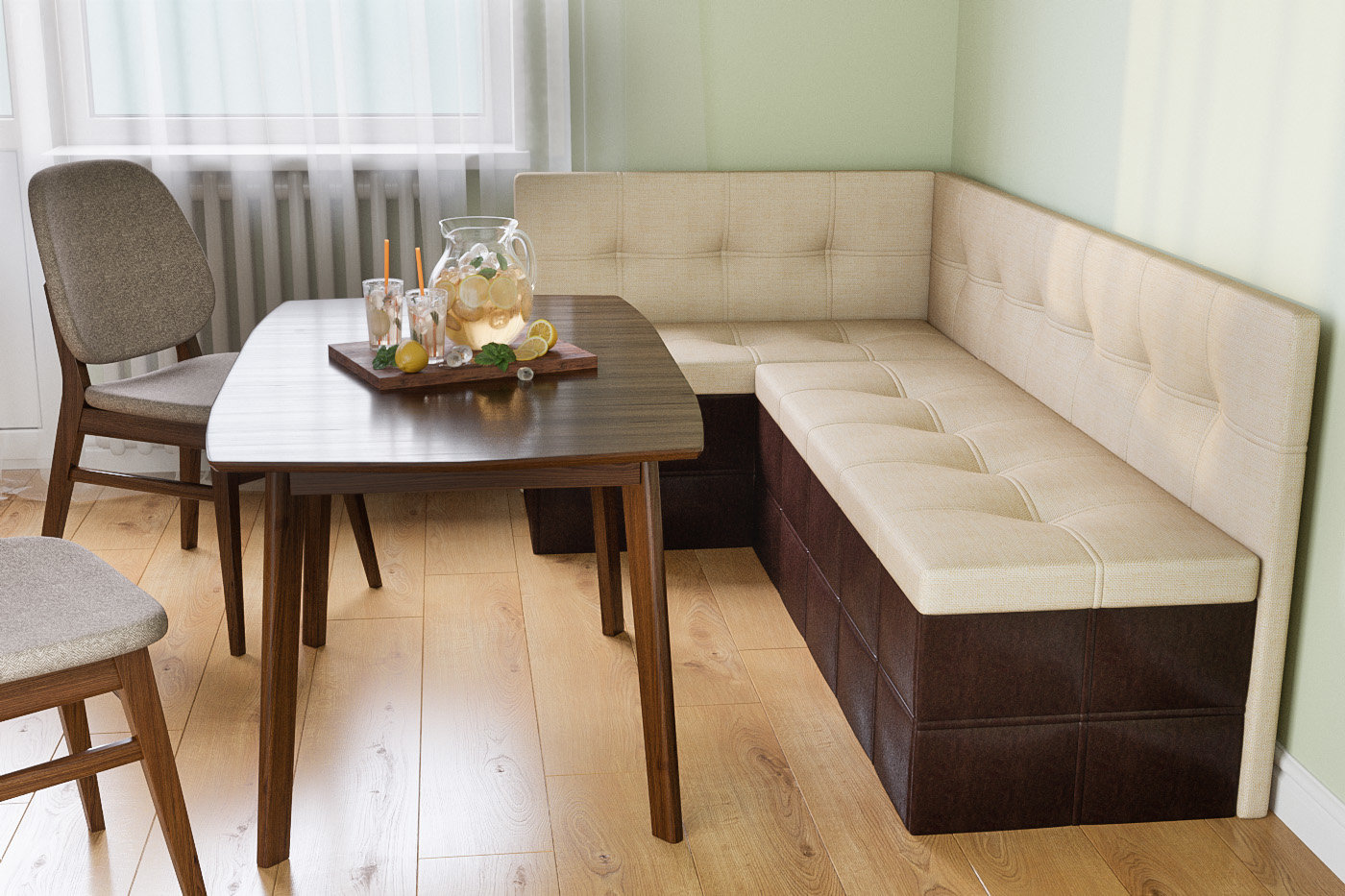
In any case, a kitchen with a sofa will never be standard, and the interior will never be monotonous. When choosing a model, it is worth considering the convenience of transformation, practicality, reliability and attractive appearance. It is better to make such a sofa for the kitchen with your own hands, according to your own taste and budget.

Features of kitchen corner sofas
Depending on the free area of the room, sofas of various shapes and designs can be used: straight, angular, U-shaped, rounded. They are distinguished by the possibility of transformation, design and material. But the palm still belongs to corner sofas, since they are suitable for rooms of any size and allow practical use of free space.

Basically, they are divided into the following types:
- Modular structures are assembled from separate blocks. Supplemented with different elements.
- Whole. They can also, if desired, transform into a sleeping place, but the main elements remain motionless.
- The bay window sofa is installed in a special niche. Such furniture is made to order or by hand, taking into account the exact dimensions of the free opening.

Any model can be equipped at your discretion. The presence of pull-out wardrobes, niches and built-in tables, shelves or countertops allows you to expand their functionality.

Do-it-yourself sofa in the kitchen
Determining the design features and design is perhaps the easiest thing in this matter. But do not forget about practicality and durability, since the kitchen is a place where furniture will constantly be exposed to changes in temperature and high humidity. A durable kitchen sofa can be made with your own hands, it is not difficult if you follow the instructions and do not choose too complex a design.

Materials and tools
The basis of any corner sofa is a frame. The choice of material for its manufacture depends on how long the furniture will last, how resistant it will be to changes in the indoor climate and how much it will be feasible for the budget.

The main materials for making the frame are as follows:
- Solid wood is an expensive and difficult material to process. The advantages include: strength, reliability, luxurious appearance.
- Making a frame from metal will require skills in welding and the availability of special equipment.
- Chipboard is made from wood waste and glued with synthetic resins. This is the most inexpensive option, easy to process, but can emit harmful resin fumes, so it is not recommended for the kitchen.
- MDF also consists of pressed wood, but safer than chipboard. It is less durable than wood. Of all those offered - the most affordable in terms of price and quality.
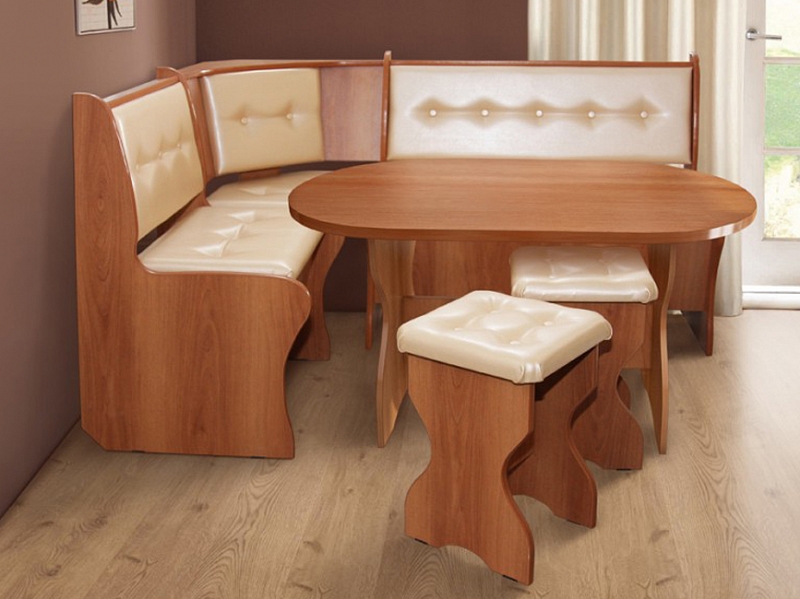
After that, it is worth deciding on the filler. There are plenty of materials to choose from: it can be synthetic winterizer, foam rubber, holofiber, batting, and the like.
Important! The thickness of the filler depends on the required softness of the product and can range from 5-10 cm or more.

Among other things, it is imperative that you acquire all the necessary tools. For a conventional design, not much is needed:
- For cutting the product and assembling: a screwdriver, an electric saw or a jigsaw, a miter box.
- Fine-grained sandpaper is needed to process parts.
- Furniture stapler for upholstery.

You also need to have on hand construction glue, double-sided tape, a pencil, tape measure, screws and a hammer.
Drawing development
An important step before making a do-it-yourself corner kitchen sofa, blueprints, is a prerequisite for well-coordinated work. All the necessary measurements should be made of the space in which the furniture will be placed.

After it is recommended:
- Draw a detailed layout of the furniture, indicating the dimensions.
- Decide on the presence of additional niches, drawers and other things. If necessary, they buy wheels, guides for drawers, handles and other mechanisms and accessories.
- Develop drawings for the total size of the product, as well as for each element separately.
Additional Information. If you have difficulties in modeling, you can use one of the constructors: PRO-100, KitchenDraw, Woody.

The drawing is developed on paper, maintaining the required parameters as much as possible. The finished sketches are transferred to the material.

Step-by-step assembly instructions
After cutting all the structural elements, you can start assembling the sofa. This is done in several stages:
- They start by assembling the frame of the first module.For this, the base of the frame is connected to the bars with bolts or screws.
- The second module is made in the same way.
- The corner part is bent 90 degrees and attached to the frame beams.
- Boxes are made and connected to the base.
- Mount the back of the sofa. For better fastening, it is fixed on metal corners.
- Seats are made separately and foam rubber is glued to them.
- Loops are attached to connect the seat to the module.

Important! Elements made of wood must be treated with an antiseptic, stain, and varnished.
In conclusion, the irregularities and joints are rubbed with emery paper. The result is a finished product that needs to be upholstered and covered with fabric.
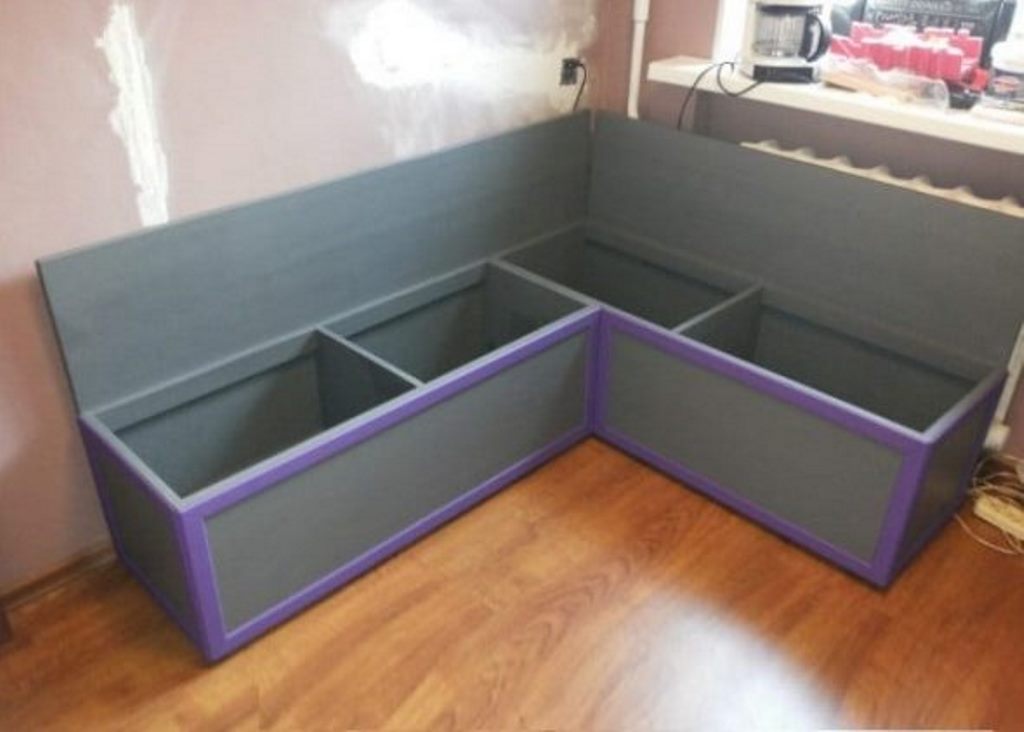
Kitchen sofa upholstery
Each element of the sofa should be upholstered with a special material - padding polyester or foam rubber, pre-cut according to the size of the parts. It is attached to the base with glue. Now you can start covering the structure with decorative material.

The following are best suited for kitchen furniture:
- Jacquard. Dense, wear-resistant material. Easy to clean.
- Flock. Durable material, easy to clean. Ideal if there are animals in the house, since the wool does not stick to it.
- Microfiber. Moisture resistant, durable material. Does not rub and does not require special care.
- Leather and leatherette. They clean well, wear-resistant and durable. Leather is an expensive material, but it looks chic.

Parts are cut from the selected material to the size of the sofa elements, adding a few centimeters for the allowance. Attached to modules and seats with a stapler.

Sewing pillows and sofa decor
When the sofa in the kitchen is ready, you can give it a little originality and decorate it with exclusive decor, which is also made with your own hands. How to decorate the soft corner:
- Covers will be a good design and practical element. They not only emphasize the style of the room, but also serve as a good protection for the main upholstery.
- You can add texture with a fleecy blanket. Combined with knitted or fur pillows, you can create coziness and warmth.
- Pillows and bolsters will be a lovely decor and comfortable to relax.

Sewing a pillow is easy. Initially, you need to sew a pillowcase made of thick fabric. The remaining silicone or holofiber can be used as filler. But the fabric for the pillowcase is better to buy separately. The colors can be matched to curtains or wallpaper. First, a pattern is made according to the size of the future pillow with an allowance of 2 cm for the seams. Next, join the edges and sew on a hidden zipper. If desired, the finished product can be decorated with bows, buttons or beads.

Where to put the sofa
When choosing a sofa model, it is important that after installation there is enough space for free movement. Ideally, it shouldn't take up more than 20% of the entire space. It is better to install a corner sofa in a kitchen that is at least 14 sq. meters. Otherwise, you should confine yourself to a small straight sofa or completely abandon such an idea.

You can install the sofa:
- Along the wall. Installing opposite a kitchen unit is a classic arrangement for a standard kitchen.
- It is practical to place the sofa along one wall with the headset in a long and narrow room.
- Near the window. They put small structures or a bay window sofa.

Making a sofa for the kitchen is not difficult, you need to follow the instructions, or watch a video for clarity. You should not be afraid of difficulties - the creative process will bring pleasure, and the result will delight you with a comfortably equipped area.
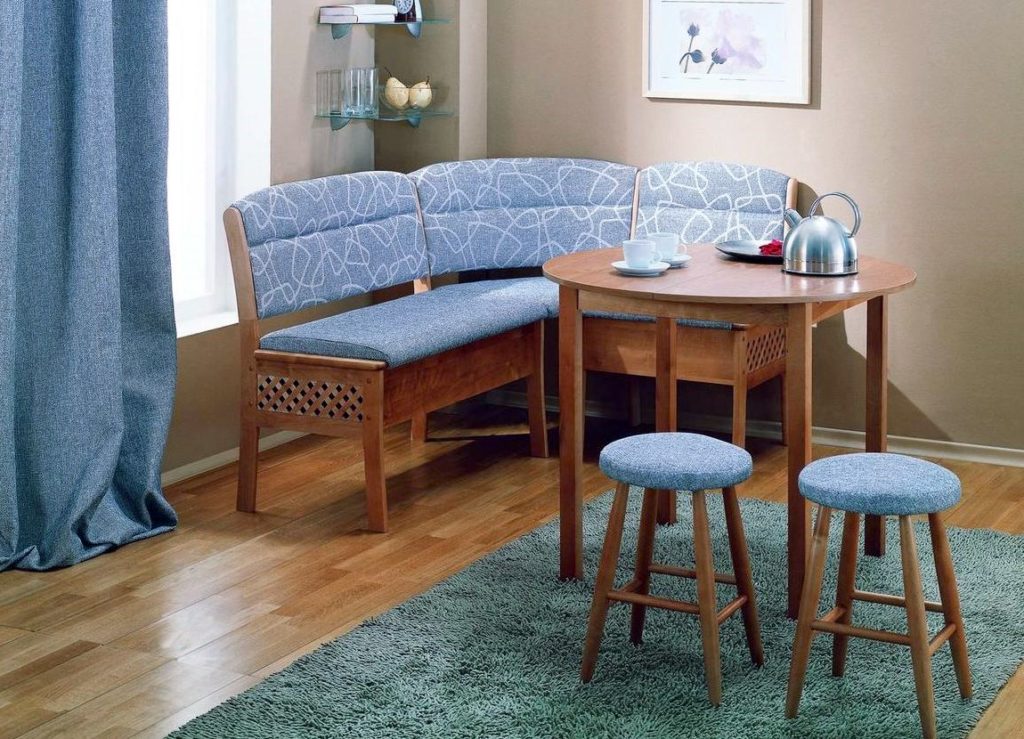
Video: how to make a kitchen corner with your own hands











